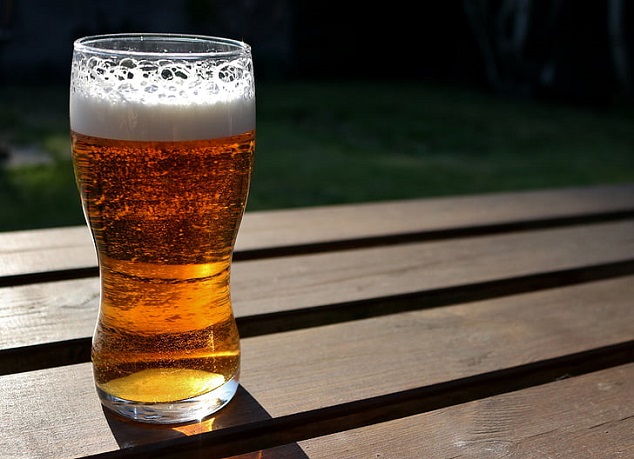Contents
Not only does beer taste fantastic, but it also has a rich history. Brewing has been perfected in some form or another for thousands of years, and there is evidence of recipes from almost 2,000 BC. With about 2 billion hectolitres of beer made annually around the world, beer swiftly overtook all other alcoholic beverages in popularity.
So, let’s get started with the guide and get you up and brewing in no time; after all, every beer enthusiast should attempt making beer at home at least once.

Here are the Basic Ingredients
Beer Yeast
Your choice of premium brewing yeasts is the most crucial component of making great beer at home. Yeast is a natural organism, or, to be more accurate, a fungus with only one cell. A yeast kind known as Saccharomyces is used in the majority of beers. This is known as a “sugar fungus” in Latin. Considering that the brewing yeasts used to make beer love sugar, it makes sense. Lager yeast and ale yeast are the two Saccharomyces species most commonly used within that genus. To assist you in the very beginning of the process, the majority of manufacturers list the “type” of beer that the yeast is most suited for, so make sure you pay attention to that.
Hops
Beer is made from hops, not grains. They give the beer flavour and aroma while also extending its freshness. Most of the time when brewing beer, hops are boiled in wort for one to one and a half hours. During this period, “alpha acids” create the primary bitter and preservative component of beer.
Malt
These are grains that have been treated and have a high starch content by nature. The starch is used by brewers to create sugar, which is then converted to alcohol. Although many other types of malted and non-malted grains are frequently employed, malted barley, or malt, is the brewer’s preferred grain for creating beer.
Water
Since water makes up more than 85% of your brew, it is crucial that it be pure and clean. The higher the water quality, the better the beer will be. Water may make all the difference in converting a good beer into a fantastic brew with the right knowledge and tweaks! Study up on the significance of water chemistry and how magnificent this whole scientific process is.

Then There is the Equipment
Every serious craft work has its set of tools. The investment in these pieces pays off regardless of whether you want to enjoy your beer yourself, share it with beer enthusiasts in your life, or even sell it eventually!
Brew Kettle
The process of making wort involves boiling the wort in a brew kettle. Here, we advise selecting a high-quality item, particularly one made of 304 stainless steel because of its ability to withstand heat and corrosion, which will demonstrate its worth over time and last for many years.
Mash Tun
A mash tun may also be necessary for the additional mashing step if you are moving on to all-grain brewing from extract. It is plausible to use a separate mash tun from your kettle even though many systems integrate the kettle and the mash tun into one unit.
Fermenter
This is another necessary piece of gear for any brewer. The fermenter is where the wort, a sweet mixture created by steeping malted grains in warm water, develops its alcohol content.
And Let’s Talk About the Process Itself
While there is still plenty to learn, this overview of the fundamental steps in the brewing process will get you up and running in no time!
Sanitising
Sanitation is a crucial step in the procedure. Even though it might not be the most pleasurable aspect of brewing, it is the most crucial. A brewery wants to make beer, not have a batch ruined by contamination that could have been prevented.

Mashing
In the process known as mashing, enzymes in the grain break down complex starches into sugars that can be fermented into alcohol. The grains are soaked for an hour in heated water, often between 65°C and 68°C using a “Mash Tun.” After the grains have been thoroughly mashed, they are “rinsed” with fresh warm water to remove all of the sugars.
Boiling Wort
The final wort composition is greatly influenced by boiling since it is concentrated, sanitised, and contributes significantly to flavour, body, and tongue fullness. We also add tasty hops there.
Fermentation
You add the brewing yeasts to the cooled wort in a fermenting vessel to start the fermentation process. The yeast does this by converting the wort’s sugar to alcohol and carbon dioxide. At this point, significant flavour chemicals are also being generated. Although we don’t have perfect control over the fermentation process, temperature control is crucial to the success of the process and the quality of the end result.
Bottling
The more affordable and straightforward option for those just starting out is bottling. Additionally, it is simpler to arrive at a barbeque with your most recent batch of homebrew. Bottles must be sanitised and cleaned, just like every other component of brewing. Thankfully, doing so can be as simple as giving them a hot wash in a fresh dishwasher. Glass or plastic bottles can be repurposed to make the activity even more environmentally friendly.
Kegging
Kegging beer is a more reliable option for bottling. Kegs can be connected to a tap and served similarly to your neighbourhood brewery. It requires a more significant expenditure, but it also offers the most bragging rights and is a simple process. Imagine sharing your most recent brew from your personal bar setup at your next social gathering! You really can’t put a price tag on that.



Comments are closed.